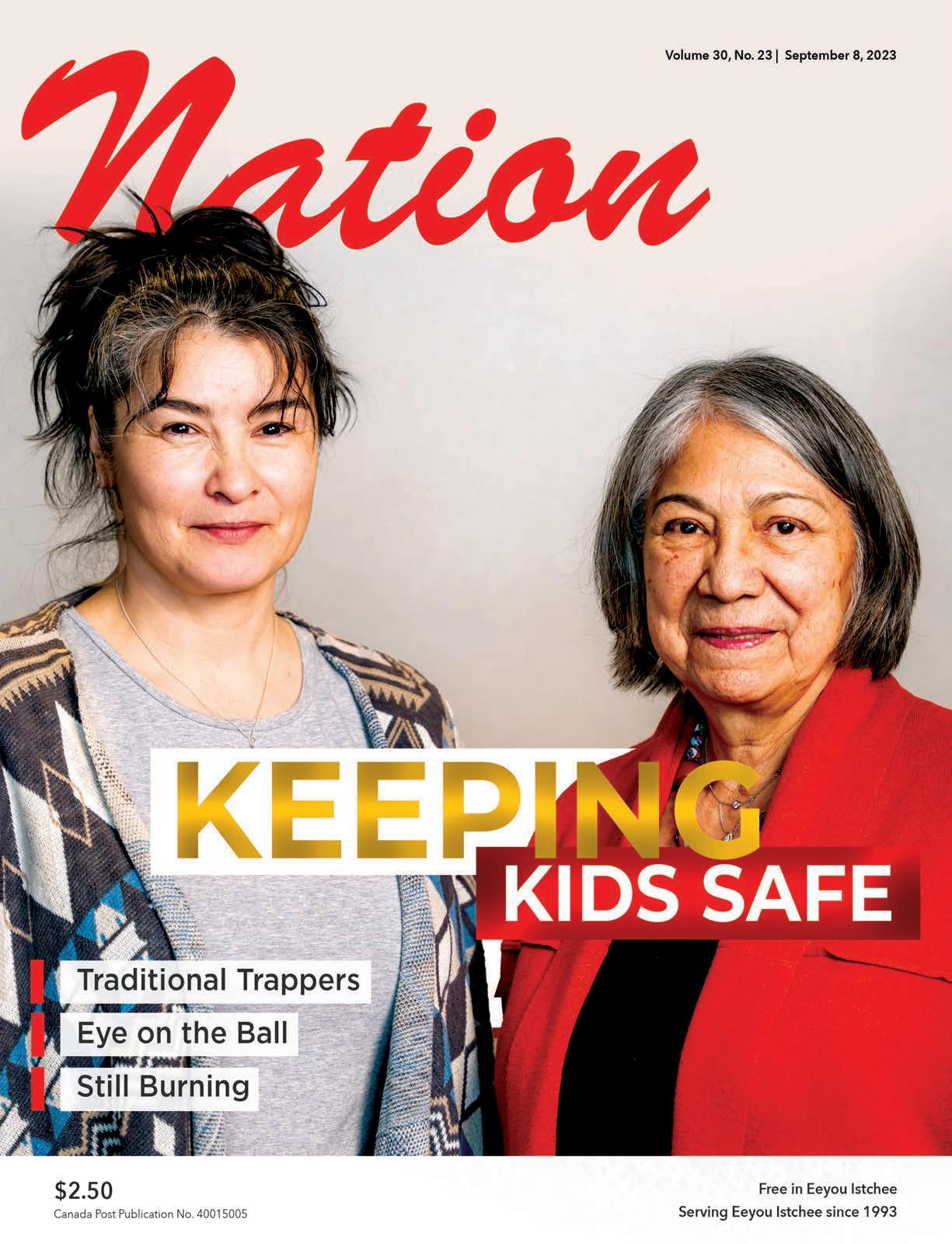
USEFUL. UNIQUE. UNSURPASSED...
2024 Edition
A WEALTH OF INFORMATION FOR ANYONE LIVING IN EEYOU ISTCHEE
All your local numbers in one place!
“I was looking for that!”
Quick and easy! Need to call the clinic?
“I found it where it’s always been. In the phone book.”
“What’s the Post Office number?” Look in the phone book!
AN EFFICIENT COMMUNICATION RESOURCE FOR ANYONE IN BUSINESS RELATIONS WITH THE CREE NATION
Easily find Cree entities and Band office contact info.
“I need to speak to the coordinator of finances in Chisasibi.”
Quickly find the name and contact info you’re looking for in the phone book!
ALL BAND OFFICE AND CREE ENTITIES CONTACTS IN ONE BOOK! MORE EFFICIENT THAN THE INTERNET!
UNIQUE LAYOUT WITH TABS, MAKING IT A BREEZE TO FIND WHAT YOU NEED
Each Cree community has its own Personalized Tab section.
Plus…Tabs for the Cree entities Blue section and the Business Yellow section.
“The James Bay Cree Phone Book is a classic that has played an important role in keeping us connected to friends, family, and finding the elusive number to the post office or pizza place. It has given us access and information for cultural centers, business and administration offices. It provides us with vital links to help and prevention lines, child and family services, emergency services and mental health services within our communities.”
Mandy Gull-Masty Grand Chief/Chairperson
BOOK YOUR SPACE NOW... DEADLINE IS NOVEMBER 3, 2023

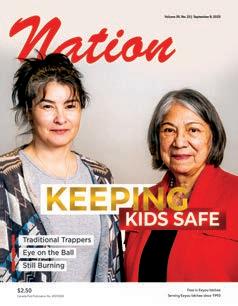










CONT ENTS Improving child welfare services 10 ᐃᓂᓕᐅᕐᓃᑦ RESERVATIONS 1 800 361-2965 ᖃᖓᑦᑕᔫᓂᒃ ᐊᑦᑕᑐᐊᖃᕐᓂᖅ CHARTERS 1 800 661-5850 ᐅᕙᓂ ᐱᒋᐊᕐᐳᖅ ᓄᓇᕕᒃ Nunavik Starts Here ᐅᕙᓂ ᐱᒋᐊᕐᐳᖅ ᓄᓇᕕᒃ Jimikin memorial baseball tournament Dealing with grief Trappers summit
consultations 20 23 16
Cree Youth Protection Commission launches public
Photo of Lorraine Spencer and Bella Petawabano
Puzzles will be back next issue! EDITORIAL Pay our escorts NEWS Blocking the news Fire season winds down BRIEFS FEATURES Finding our own solutions Bella Petawabano on intergenerational trauma Talleyman talks Ballpark action You are not alone REZ NOTES As the seasons change UTNS Time is running out 4 5 6 9 10 14 16 20 23 25 26 Sports Opinion
Photo by Joe Alvoeiro/CBHSSJB
Irecently had another experience of being a medical escort for a family member. Being an escort means assisting a family member from the Cree communities of Eeyou Istchee who needs to travel outside their community for health care.
Escorts make many sacrifices to support their loved ones. While Cree Health Board covers some of the costs for escorts (room and board), there are additional costs they end up paying out of their own pockets. This can run the gambit from tampons to aspirin or melatonin (to help you sleep) to books and newspapers.
An escort might have taken time off work (using compassionate leave or vacation time) or had to leave work entirely. Not only are they missing those hours on paycheques, but they may also end up not maximizing future retirement benefits.
Helping patients can include feeding (cooking or taking them to restaurants), bathing, dressing, grooming, assisting use of the toilet, assuring medication is taken, and mobility. Above all, escorts ensure that patients get to their appointments on time and understand the care they receive.
Cree escorts used to receive some money, but this isn’t so these days. One wonders why, but by discussing this with long-time patients and workers we found a probable cause.
In that past, some Cree escorts used their per diems to drink and so the health board decided the easiest way to handle this problem was to not give escorts any money. It made for less costs and paperwork. I think that the solution was the wrong one. The health board has no

Pay our escorts
by Will Nicholls
right to interfere in someone’s personal life except when it impacts the health of the patient. A simpler solution would have been to make a list of the troublemakers and ban them from being escorts.
However, the bottom line is one that we should understand. Escorts are doing the work they do out of the goodness of their hearts. It is not right to expect anyone to provide such a crucial service for free. We do not expect this of anyone else in the Cree Nation and we should not expect it here.
It doesn’t have to be a great amount, but looking at the faces around the Espresso Hotel one can see the difficulties it places on both the escorts and the patients. The food there is okay at times,
but people receive smaller portions than most would like. It is also a limited menu that can become tiring after a while.
Having a chance to head out and enjoy a meal at a restaurant would be a change from their daily routine. Being able to afford to go to a movie or some other entertainment would be wonderful. As nice as the Espresso is, having to stay there 24/7 is like being in a half-way house with nothing to do.
Escorts do their duties while missing family and friends and not participating in traditional and community activities. Being away from home is hard enough. Pay Cree patient escorts for their time and sacrifices because it’s the right thing to do.
is not right to expect anyone to provide such a crucial service for free
Lyle Stewart, Martin Siberok PRODUCTION COORDINATOR AND MANAGING EDITOR Randy Mayer CONTRIBUTING WRITERS S. Orr, M. Labrecque-Saganash, P. Quinn, J. Janke, A. Coon-Come, A. Nambiar, B. Petawabano DESIGN Matthew Dessner SALES AND ADVERTISING Danielle Valade, Donna Malthouse THANKS TO: Air Creebec CONTACT US: The Nation News, 918-4200 St. Laurent, Montreal, QC., H2W 2R2 EDITORIAL & ADS: Tel.: 514-272-3077, Fax: 514-278-9914 HEAD OFFICE: P.O. Box 151, Chisasibi, QC. J0M 1E0 www.nationnews.ca EDITORIAL: will@nationnews.ca news@nationnews.ca ADS: Danielle Valade: ads@nationnews.ca; Donna Malthouse: donna@beesum.com
SUBSCRIPTIONS: $60 plus taxes, US: $90, Abroad: $110, Payable to beesum communications, all rights reserved, publication mail #40015005, issn #1206-2642 The Nation is a member of: The James Bay Cree Communications Society, Circle Of Aboriginal Controlled Publishers, Magazines Canada Quebec Community Newspaper Assn. Canadian Newspapers Assn. Les Hebdos Sélect Du Québec. Funded [in part] by the Government of Canada. | www.nationnews.ca | facebook.com/NATIONnewsmagazine | Twitter: @creenation_news



4 the Nation September 8, 2023 www.nationnews.ca
The Nation
EDITORIAL
L.
is published every two weeks by Beesum Communications
BOARD
Stewart, W. Nicholls, M. Siberok, Mr. N. Diamond, E. Webb EDITOR IN CHIEF Will Nicholls DIRECTOR OF FINANCES Linda Ludwick EDITORS
CMC A AUDITED
Editorial
It
Blocking the news
The QCNA reacts to the Meta news ban
by Avanti Nambiar
In the wake of Meta blocking news from its social media platforms, The Quebec Community Newspapers Association (QCNA) has released a list of tips to guide its members. Without the ability to share direct links on Canadian Instagram or Facebook, domestic news outlets are scrambling to keep reaching their online audiences.
Due to the recent passing of the Online News Act (Bill C-18), social media giants are now required to pay for posting and linking news articles. In response, Meta chose to remove news content from both its main platforms. Meta’s stance has long been that the Online News Act is bad for business, given that it places a price on links shared by users. The company enacted the ban on its platforms well in advance of the law’s expected implementation, at the end of this year.

The QCNA recently circulated a guide listing alternative options for members to share their articles. One option involves sending group messages to Facebook followers, encouraging them to subscribe to their newsletters directly. Other possibilities include VPNs, shortcut links and QR codes.
The guide also recommended refocusing on other social media outlets, such as LinkedIn, Mastodon and Twitter, recently rebranded as X. Tools such as Dlvr.it and Hootsuite allow users to share
their latest news publications straight to social networks. Even the stories section of Instagram and Facebook could be used as a loophole to distribute news. The organization encourages its members to send them feedback regarding their tactics.
QCNA Vice President Nikki Mantell says that the Meta block has impacted the growth prospects of her publication, The Low Down to Hull & Back News. Mantell says that smaller news agencies struggle to compete with the major advertising platforms run by Meta. She claims that Facebook was originally a “primary driver of traffic” to her outlet.
Mantell qualified that many publishers had mixed feelings about Bill C-18, because they anticipated Meta’s reaction, and felt the outcome could have been avoided. That being said, she still described Meta’s blockage as “going nuclear” and “way over the top.” Stating that many in the Canadian news business are in “precarious positions,” she concluded that “we are dealing with a giant who has disrupted our industry so badly.”
With the ban in place, Mantell says that The Low Down has turned to cultivating its subscriber base through newsletter distribution. News companies such as hers have begun directing audiences to go right to their publication websites,
and bookmark them. Mantell wants users to develop the habit of going to media sources themselves, rather than expecting announcements on Facebook feeds. Readers are also encouraged to buy print copies or to subscribe. Even with the adjustments, Mantell admits that the block has made “this already struggling industry so much more difficult.”
The block by Meta was strongly condemned by Prime Minister Justin Trudeau. Referring to blocked coverage of the summer’s severe wildfires, Trudeau claimed that Facebook was putting profits above public safety. Some who fled the fires complained to domestic media outlets that they were unable to share important information. While Facebook’s safety check feature could be used by citizens to mark their status, the block still prevented people from accessing local news updates.
Meanwhile, the Canadian Radiotelevision and Telecommunications Commission has shared its plan for a bargaining system for news outlets and platforms to negotiate. A government agency tasked with supervising broadcasting and telecommunications, the CRTC plans to launch a public consultation this fall, to gather opinions and perspectives. Negotiations are expected to start in late 2024, or early 2025.
www.nationnews.ca September 8, 2023 the Nation 5 Editorial News
As the changing season brings cooler and wetter weather, Quebec’s forest-fire prevention agency SOPFEU is reducing its crews and moving management operations for the James Bay region to Val-d’Or. While fires continued to burn throughout Eeyou Istchee, most are under observation and don’t pose a threat to communities or infrastructure.
The biggest concern at press time was the Wemindji fire 602, which was slowly progressing from the community access road to the Billy Diamond Highway. Thickening smoke from that fire forced the highway’s partial closure on August 27 but it reopened the following morning.
High winds projected at 50 km/h prompted a Phase 1 evacuation of 230 of Wemindji’s most vulnerable residents to Chisasibi after a state of emergency was declared August 16. Marking the first time that evacuees had been sent to another Cree community, volunteers hosted most in private homes with the remainder accommodated at the hotel or construction camps.
“It was a short-term evacuation, a precautionary measure,” explained regional fire marshal Lee-Roy Blacksmith. “They wouldn’t have had an access road if they wanted to evacuate. Only by air or, if it was really intense, out in the bay. Evacuating over 2,000 people with no access road would have caused a major issue.”
Blacksmith said SOPFEU had a ground crew working on Fire 602 and was conducting fly-by observations on fires near Waskaganish and the Trans-Taiga Road. While bush and forestry roads were open, travellers were warned to be cautious and to verify their status before heading out.
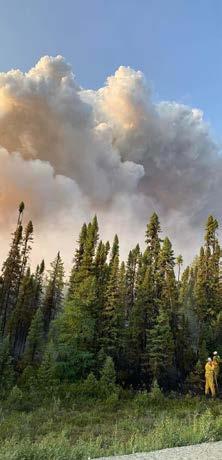
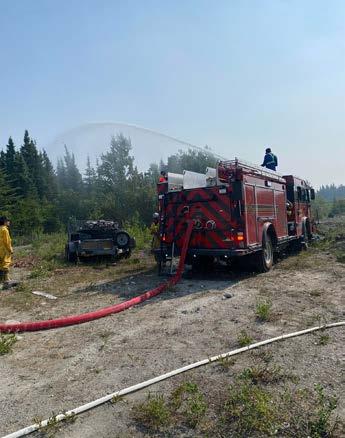
On August 29, Eastmain honoured outstanding members of its community, including the many emergency service workers and volunteers who kept it safe during this summer’s forest fires. Eastmain was fully evacuated in mid-July with Chinook helicopters sent by the Canadian Air Force.

6 the Nation September 8, 2023 www.nationnews.ca
“It was pretty hectic on evacuation day, picking up people and transporting them to the airport,’ said Jeremy Shanush, Eastmain’s firefighting team leader. “We were told by midnight the closest it would get was six kilometres from the community. We were in a rush to make a fire line behind backyards and wetted the wooded areas near the community.”
When predicted precipitation didn’t arrive because the satellite had confused the heavy smoke with rain clouds, winds fortunately took the fire in the other direction. Shanush said it was strange seeing the community so empty, with only about 15 people left behind, and he stepped in as cook when the blazes were too intense for ground crews.
With fires between km 70 and 42 along the access road, the Eastmain team started from one end to battle hot spots, meeting up with SOPFEU somewhere in the middle. Trained in forest firefighting 10 years ago, this was the first time Shanush had worked with both SOPFEU and his son, who was one of the new recruits this summer.
While SOPFEU’s mandate is to protect communities and infrastructure, Shanush argues that the Cree Nation should have its own forest firefighting entity to protect bush cabins and other “cultural infrastructure.” He did get permission to protect some local camps.
Fire season winds down

Wemindji’s vulnerable evacuate to Chisasibi as Eastmain honours frefghters
by Patrick Quinn, Local Journalism Initiative Reporter
“At km 70 where the fire was raging and had gotten past the road, we managed to get through and save camps,” said Shanush. “We wet the area, left the sprinkler system on overnight and left. The smoke was very dense. There’s a video of my son walking in front of me as my guide. I had to listen to walk the roads.”
On a night mission to protect a camp at km 38, they arrived just as smoking embers were creeping from under the newly built cabin and managed to extinguish them. While a bulldozer had previously pushed away the surrounding foliage, fire had passed through some remaining vegetation. The cabin’s owner emotionally thanked them at the fire hall the following day.
Another night they were called at 3am to reinforce the Wemindji fire department. They arrived at 6:30am and went straight to work, battling fires near the airport all day. When SOPFEU workers complained about the smoke, Shanush joked “this is nothing – in the teepee you can barely see the guy across from you when we’re cooking.”
With a fire truck hauling water along the roadside, the crew would pump whatever they could find from nearby creeks with hoses in the woods. Walking the fire edge looking for hot spots, they would sometimes have to extinguish them two to three feet underground, so they didn’t flare up again.

“Sometimes in the woods doing hot spots a sudden flare-up will happen and there’s a big flame right beside you,” Shanush told the Nation. “You have to be careful with the trees that were burnt. Give a little nudge or step on that root and it could fall on you.”
While firefighters wait at the base during water bomber missions, Shanush said those trapped in the woods can shoot their hose skywards to communicate their presence. He was impressed by a team from the Yukon that drops self-igniting “dragon eggs” from the air.
“The Yukon boys said we’ll fight fire with fire while the wind is in our favour,” explained Shanush. “They were afraid the fire would jump the lake, spread to the vegetation and continue along the road to Eastmain so they used that dragon to ignite a dry area. When the wind shifted there was no vegetation, so the plan worked.”
Visiting firefighters had impromptu lessons on Cree culture in the bush, enjoying traditional goose meals and a visit to the sweat lodge. Shanush introduced a Métis crew chief who had long been searching for a ceremonial drum to a friend, who gifted one to him.
“He started crying receiving this drum and said I’m very grateful I met you,” shared Shanush. “They’re far away from home. I hear people complain SOPFEU’s not doing this or that. It’s not true – I was very thankful for them.”
www.nationnews.ca September 8, 2023 the Nation 7









ouwahstore@gmail.com www.ouwahstore.com (514) 588-3162 18 Fort-George Road Your place to get great gift ideas for your family or business. Come and browse our shop. There’s a lot to see. We can also serve you through Facebook chat. For online orders, we accept EMT for payment or we can process credit card or visa debit over the phone. We also accept PO’s from entities and companies. If you need a quote, please send us a message at ouwahstore@gmail.com A CREATIVE AGENCY WITH of promo items experience with certified PPPC suppliers of service in Eeyou Istchee T-shirts I Custom tote bags I Apparel I Printing Corporate and Event Materials I Design I Annual reports I Translation 514-272-3077 info@beesum.com beesum.com A UNIQUE PERSPECTIVE
Ottawa to change land claims process
The Canadian Press reports that the federal government has changed the way it settles First Nation land claims, Crown-Indigenous Relations and Northern Affairs Canada confirmed August 22.
CP obtained briefing materials prepared for the deputy minister of Crown-Indigenous Relations and Northern Affairs Canada under the Access to Information Act.
The department is considering amendments to the Indian Act and the Specific Claims Tribunal Act, though it didn’t say what those changes would be.
The July 2022 documents say Canada wants to modify how modern land surrenders are conducted. Specific claims deal with past wrongs against First Nations, including the administration of land or other assets.
Instead of a modern surrender, says the CP report, federal officials suggest using a “promissory estoppel.”
“Under this approach, the First Nation agrees to forgo any legal cause of action in relation to the lands in question and further promises in the settlement agreement not to claim a reserve in the claim lands against Canada, the province, or third parties,” a spokesperson from CrownIndigenous Relations said in a statement.
The briefing materials say that “until recently,” all specific claims settlements concerning improper historical land surrenders included a requirement for a “modern Indian Act surrender” to ensure “legal clarity and finality for Canada.”
This modern surrender isn’t required by law, or under the Specific Claims Policy.
Gespe’gewa’gi
season 2 unveiled
Rezolution Pictures unveiled the much-anticipated second season of Gespe’gewa’gi: The Last Land. The documentary series explores the lives of Mi’kmaq fishers from Listuguj, Quebec, whose livelihoods are intricately tied to the water,
where they harvest salmon, crab, lobster and shrimp.
The second season, aired September 4 in Mi’kmaq and September 5 in English on APTN, expands its narrative horizons, introducing new fishers specializing in snow crab, tuna, herring, eel and kelp.
Painting a vivid picture of life on the northernmost tip of the Gaspé Peninsula, Gespe’gewa’gi promises a captivating blend of entertainment and enlightenment. While maintaining an overall light-hearted tone, the show delves into the issue of resource rights, highlighting the nuances of the conflict between local and Indigenous fishers.
The series showcases the fusion of scientific knowledge and Indigenous wisdom, the ongoing evolution of the fishers’ way of life and efforts to ensure sustainability for future generations. Larger-thanlife personalities take centre stage. In season 2, women emerge as leaders in the traditionally male-dominated domain.
Produced by Montreal’s Indigenous-owned production company, Rezolution Pictures,
the show exudes authenticity and an intimate understanding of its subject matter.
Kanesatake man translates Bible into Mohawk
A complete Mohawklanguage version of the Bible will be published this fall after a 17-year-translation effort by an 83-year-old Kanesatake resident.
According to The Canadian Press, Harvey Satewas Gabriel began sporadically translating passages into Mohawk in the 1980s, inspired in his teens by a United Church minister he had heard spontaneously translate the Bible during a service in the 1950s.
The process took off in the 1990s, when Gabriel was invited to join a group of Elders who were translating Second Corinthians. That group disbanded, but Gabriel continued, working evenings and weekends prior to his retirement in 2005.
“I kept going because when you start something for the Creator, you can’t stop,” he told CP. “It’s so interesting. Every verse is different. I was wondering what the next verse says.”
The new Bible has a purple cover – the colour of the Iroquois Confederacy flag – and an illustration depicting the turtle, wolf and bear clans. The title reads Ohiatonhseratokénti – a word Gabriel says means “holy pages.”
When asked what motivated him, Gabriel’s answer was simple: “Language.”
www.nationnews.ca September 8, 2023 the Nation 9
In Brief
In Brief
The title reads Ohiatonhseratokénti – a word Gabriel says means “holy pages”
SOLUTIONS
by Patrick Quinn, Local Journalism Initiative Reporter


Features
Bella Petawabano (left) and Lorraine Spencer
10 the Nation
(right), Youth Protection Commissioners
All photos by Tatiana Philiptchenko/CBHSSJB
Cree Youth Protection Commission launches public consultations
The Cree Health Board’s recently created Youth Protection Commission wants your input on how to improve the region’s child welfare services by adapting Quebec’s Youth Protection Act to Cree cultural values and realities.

After internal discussions with frontline workers this summer, a public consultation process is launching September 7. Changing the youth protection system has been one of the biggest priorities of board chairperson Bertie Wapachee’s mandate and something people have long been calling for.
“Many felt it was a repetition of the old residential school approach, coming in and taking your child away,” Wapachee told the Nation. “We have more than enough funding and resources. It’s just not working in favour of our youth. The only way to change the system is to change the legislation.”

Having worked in youth protection 30 years ago, Wapachee recognizes that families and communities need to be more accountable and involved in finding solutions. He asserts that the system is sometimes abused by parents, with the Department of Youth Protection (DYP) expected to play a babysitting role.
“We go into a party, take the child out, wait for the party to be over and bring them back,” said Wapachee. “That’s been the system. There are no consequences on parents – the system has to change and focus on the family.”
www.nationnews.ca September 8, 2023
“We’re hoping the community will come out in force to speak to these issues and come up with the solutions with us”
- Lorraine Spencer
A larger goal of the consultations is to spread awareness about the real purpose of youth protection. While community members are encouraged to call the YP hotline if they believe a child is at risk, health board executive director Daniel St-Amour suggested that this is resulting in too many unnecessary investigations.

“There’s no way 30% of the kids are in trouble,” asserted St-Amour. “If you use the DYP every time you don’t agree with how the parent raises the child then you’ll end up with very many signalements. DYP should be a last resort.”
Reports have previously been made because a child wasn’t registered in hockey (supposedly suggesting poverty) or took their parents’ car for a joyride, situations that St-Amour believes could be better resolved through local staff at Community Miyupimaatsiiun Centres (CMCs). With a limited number of specialized personnel, this YP commission will enable the CBHSSJB to better allocate resources to where they make the most impact.
In recent years, the health board has been optimizing various departments for efficiency and integration of Cree values. An emerging preventative model of care involves a healthcare team evaluating a family altogether, inspired by services in Alaska that found 51% of physical ailments had a mental health component potentially influenced by hereditary patterns.
While substantial investments and developments were made to the DYP following an audit in 2016, outcomes have remained similar. To adapt the youth protection law to Cree realities, it was determined that a regional commission could most effectively make recommendations that will be supported by both the people and various levels of government.
Former CBHSSJB chairperson Bella Petawabano and psychologist Lorraine Spencer, founder of Siikuun healing retreat, are the commissioners (chaashtipishtihch) tasked with examining issues faced by Cree people in YP and youth criminal justice. In developing their recommendations, they will be reaching out to other Cree entities, provincial stakeholders and Indigenous best practices.
“When you want to make a systemic change, you have to look at the root of the problem,” said Spencer. “We’re hoping the community will come out in force to speak to
these issues and come up with the solutions with us – it’s in their power to actually make those changes that need to be made.”
While the Atikamekw Nation made their own changes to Quebec’s YP Act in 2018, the Cree Nation’s more developed resources and healthcare autonomy provide a unique opportunity to fully decolonize the region’s child welfare system. The commissioners believe that guiding in the right direction, or maamiinupitihtaau, means learning from both beneficial traditional practices and the legacy of colonization.
The Cree Nation adopted the YP law in 1979 along with the rest of the province, one year after the Cree Health Board and other institutions were formed out of the JBNQA. At the time, it was unheard of for Indigenous people to control their own institutions, so Petawabano said they were “modelled on the white man’s.”
Since then, explained Petawabano, “change has come so quickly that we didn’t have time to adapt ourselves to the law. We figured since these were white man’s problems, it was best to deal with them with their programs. We did not think of our knowledge, our medicines, our Cree way of being.”
Petawabano said her generation of residential school survivors had to relearn how to live off the land and “follow the rhythms of the seasons.” To her, the YP commission’s Cree name, aah chishtipistihch awaash-uschiniichisiu sikischaayimuwiniyiu, reflects that feeling of being secure that they once had.

“Now we have the chance to do what we should have done 45 years ago,” Petawabano said. “The Cree culture is the foundation of where we need to start. We still have our Elders to carry on those teachings – we can look at what’s helped us in the past. There’s an erosion that’s already happening. Time is working against us.”
Recalling the proverb that “it takes a village to raise a child,” Petawabano said they need community stakeholders to be part of the change. The commission’s results are expected to guide holistic changes to the Cree healthcare system, including the development of two planned youth mental health facilities.
“Let’s make self-government work for us,” urged Petawabano. “All we have to do is work together and put our resources together to maximize what we can do for our youth and families.”

12 the Nation September 8, 2023 www.nationnews.ca
Headshot photos by Rodolphe Beaulieu
Poulin/CBHSSJB

“There’s no way 30% of the kids are in trouble”
- Daniel St-Amour
The only way to change the system is to change the legislation”
- Bertie Wapachee
www.nationnews.ca September 8, 2023
Photo by Tatiana Philiptchenko/CBHSSJB
Bella Petawabano’s explanation of intergenerational trauma

Ihad prepared a document some time ago on my own personal explanation of what took place when we talk about intergenerational trauma. My great-grandson will be celebrating his second birthday in a few months. He’s the fourth residential school generation. That means I’m the first. I’m a residential school survivor. My parents didn’t speak any English or French. Just Cree and they lived off the land all their lives and that’s how they raised us prior to us going through that system.
It’s less than 50 years ago. I was young then. That’s when the Cree Health Board came to be, one of the institutions created from the JBNQA. It has its laws and policies that were not Cree. We adopted how things were done outside Eeyou Istchee. Many people my age came out of being many years in residential school in the late 1960s and 1970s. Many of us had been away since we were four or five years old. We were very young only to return as we became young adults. We came home trying to learn the skills of life on the land. I’m sure some of us felt some shame learning skills as a young adult that should have been learned as a child.

We had to relearn the language because it was forbidden for us to speak it in residential schools. We came back to traditional food. Some of us had loved and missed it while we were away, but some of us had acquired a taste for the white man’s food. During those years we were away, we had time to forget about our language and our values, which are the basis of who we are. We interacted like the white man. We didn’t have a choice. We also wanted to live like the white man, let’s face it.
When we came home from residential school, some of us were eager to return to our families and the Cree way of life, to live on the land with the family and follow the rhythms of the seasons. To live off the animals we harvested, to eat whenever we were hungry and not be dictated by the clock and feel happy and secure. This is something that we missed in residential school – think of that.
We did not have much but we did not consider ourselves poor. But we had shelter, we had food, we were together with our families, we felt secure. We were family. To me, this is why we call the youth protection commission aah chishtipistihch awaash-uschiniichisiu sikischaayimuwiniyiu, the feeling of being secure, this is what we once had in my generation. What happens four generations later, we can only imagine.
When the hydro-electric project was announced in the early 1970s, our people still lived on the land. Guess who came to the forefront to fight the battle of the century? It was the Indian Residential School youth who came home because they were able to speak, read and write the white man’s language. Our generation only had the experience of being born on the land. The hunters and trappers came out of their hunting territories to support the youth and they
appeared in court to testify, sharing and arguing their way of life was being threatened. After many months was the signing of the JBNQA. We were given the right, yes, to set up our own institutions with government funding.
That’s how the CHB was formed 45 years ago. At that time, it was unheard of for Indians to control their own institutions like healthcare, education, local and regional government, and youth protection. There were no models, so our institutions were modelled on the white man’s.
In 1979, one year after the CHB was established, the YP law was adopted. Most people working in YP now were not even born then. At that time, we were short-handed in the expertise required to run these types of institutions. We did not think of our knowledge of what we had as Cree and how we could integrate that into our new institutions. Our medicines, our ways of helping one another, our Cree way of being. We did not think of that. It all happened very fast.
As we were confronted with the challenges in the 1970s, although they’re very different and more complex today, the challenges of living a sedentary way of life, all the complex problems surfaced, and we had no idea what to do. We are still searching. We figured since these were white man’s problems, it was best to deal with them with their programs. We tried to adapt ourselves since 1979. Now we have the chance to do something about it. We will do what we should have done 45 years ago to change that.
If we don’t do it now, it may be that we will have lost a lot of what we have in terms of our traditions, language and val ues. There’s an erosion that’s already happening. Time is working against us. Having a dialogue about what’s working and what’s not working, we can look at what’s helped us in the past. Those values and traditions for healing and care for one another. This is what this commission is set out to do. Our purpose is to get people to talk and share to guide us in looking for solu tions in how we can change things.
14 the
Photo by Joe Alvoeiro/CBHSSJB
Nation
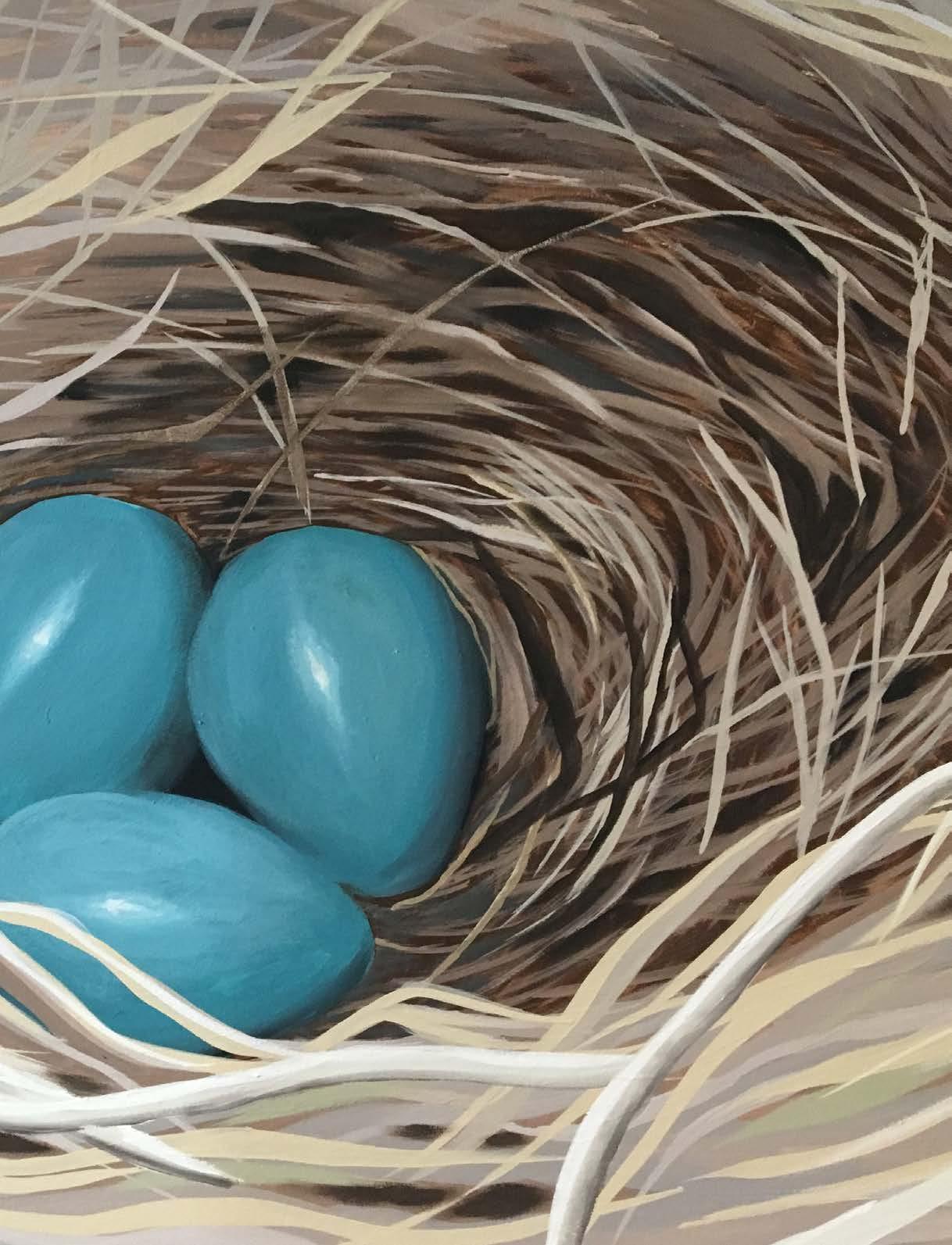
If you are an Indigenous woman of Eeyou Istchee and you are seeking safety and support, we are here to help you! creehealth.org/services/womens-shelters-robins-net Pîpîchâu Uchishtûn | Robin’s Nest | Women’s Shelter For women and children of Eeyou Istchee suffering from domestic violence 1 855 753-2094 CRISIS LINE Toll Free | Open 24/7 HELP ᐐᒋᐦᐄᐙᐅᐎᓐ WÎCHIHÎWÂUWIN HELPLINE If you need emotional support or to learn about all the services available to you, please contact us: 1 833 632-HELP (4357) creehealth.org
Talleyman
TALKS



 by Avanti Nambiar | Photos by Will Nicholls
by Avanti Nambiar | Photos by Will Nicholls
Trappers summit on wildlife management held in Mistissini
The Regional Cree Trappers’ Association (CTA) held a summit on wildlife management and the impacts of resource development in Mistissini August 15-16. Hunters, fishers, trappers and members of the Cree community gathered for the 2023 Maamuu Uhpikaapuutaau summit. Throughout the event, speakers discussed the tactics used in Eeyou Istchee to look after land, bodies of water and ecology.


This event, which was specifically focused on inland affairs, gave tallymen the opportunity to express their issues in a grassroots manner. Cree tallymen are tasked with overseeing traditional

traplines, which run throughout Eeyou Istchee. For them, land development is a significant source of concern.
Deputy Grand Chief Norman Wapachee said he lived off the land for 10 years, alongside his father. Wapachee said his father felt voiceless in the face of mining and forestry development. As companies carried out exploration of the territory, they ignored the toll it took on the traditional traplines.

Wapachee noted that trappers were “frustrated in not being heard,” which inspired him to advocate for the creation of the summit. While local gatherings of trappers have taken
place before, this is the first Cree summit of such size and scope.
Income security, moose harvest, the role of government and the damage from this summer’s forest fires were topics of discussion during the summit’s panels. To many in the community, economic interests have to be balanced with the preservation of the traditional Cree lifestyle. Forestry and mining companies may consult with tallymen, to learn which areas to use for industry, and which territories to safeguard. To be consulted, and to be heard, by industry, is vital to the CTA.
For women and children of
suffering from domestic violence
Toll Free | Open 24/7
Wapachee explained that the programs promoting traditions encourage “empowerment” rather than “dependence.” He pointed out that in the ancestral way of life, the land provided food and resources. Now, he argues that people have become reliant on external programs. For example, younger people wait for Niskamoon or forestry funds to arrive before venturing into the forest to cut wood. Previous generations would have simply cut the wood as a matter of course.
According to Wapachee, the reliance on programs has created a class system in what was once a more egalitarian society – permanent employees make up
an “upper class,” and seasonal workers make up a lower class. His solution is to return to an older mode of living, by encouraging younger generations of Cree to occupy the land.
The summit was attended by Grand Chief Mandy Gull-Masty, who thanked Dr. Philip Awashish for speaking about governance and the traditional role of the Nituuhuuchimaauch (tallymen). She also thanked Ghislain Picard, Regional Chief of the Assembly of First Nations QuebecLabrador, who gave the closing remarks.
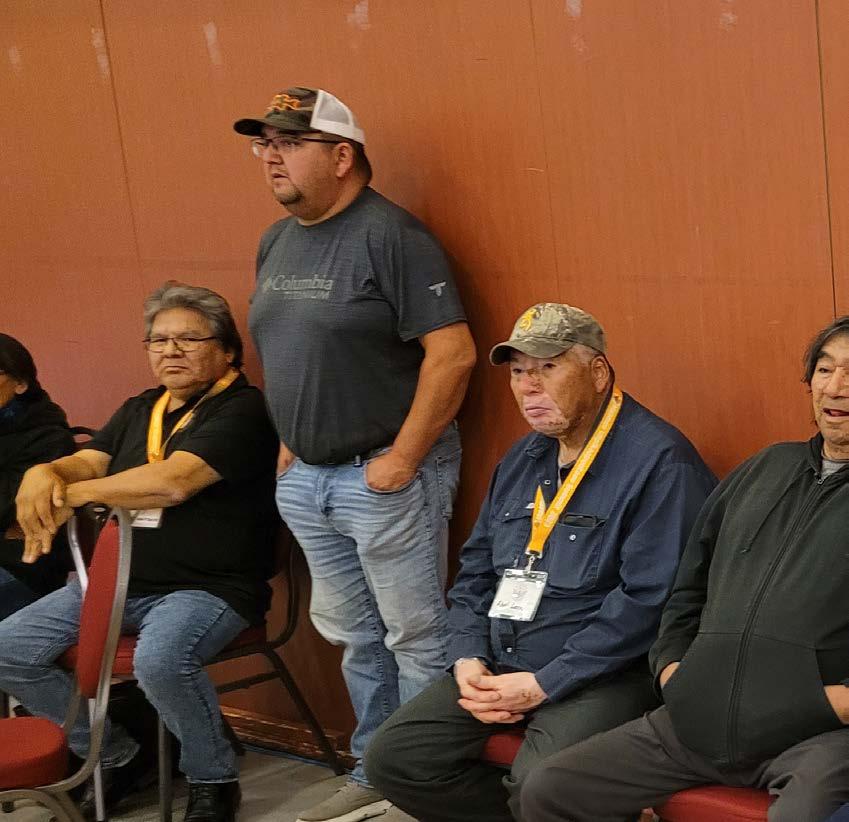
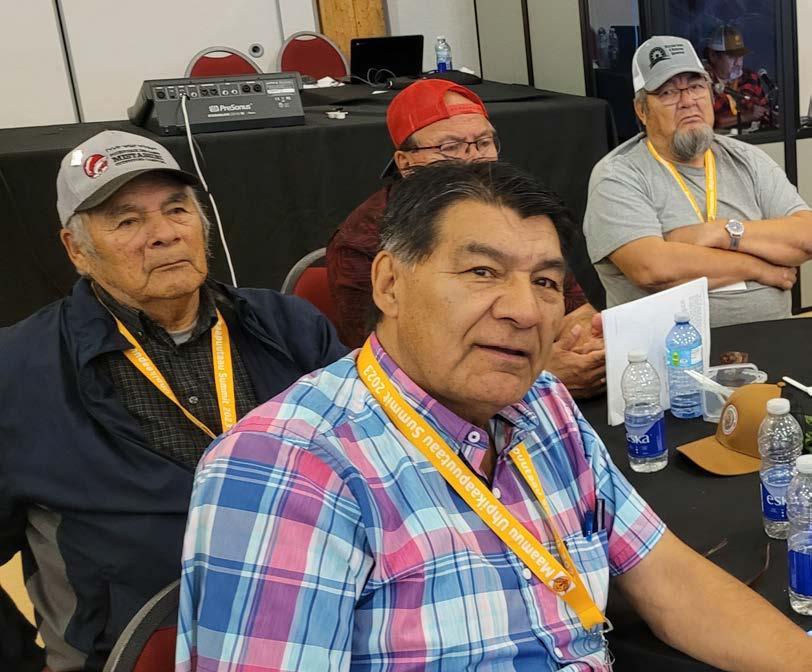
“I feel like this event provided so much information and direction,” stated Gull-Masty. She added that she looked forward to the next summit session in Chisasibi September 13-14, which will focus on coastal affairs.

18 the Nation September 8, 2023 www.nationnews.ca If you
woman of Eeyou Istchee
you
creehealth.org/services/womens-shelters-robins-net Pîpîchâu Uchishtûn | Robin’s Nest | Women’s Shelter
Eeyou Istchee
1 855 753-2094 CRISIS
are an Indigenous
and
are seeking safety and support,
LINE
ᐐᒋᐦᐄᐙᐅᐎᓐ WÎCHIHÎWÂUWIN emotional support or to learn about all the
available to you, please contact us: 1 833 632-HELP (4357) creehealth.org
services
Younger people wait for Niskamoon or forestry funds to arrive before venturing into the forest to cut wood.
Previous generations would have simply cut the wood as a matter of course
The CTA Wallfowers
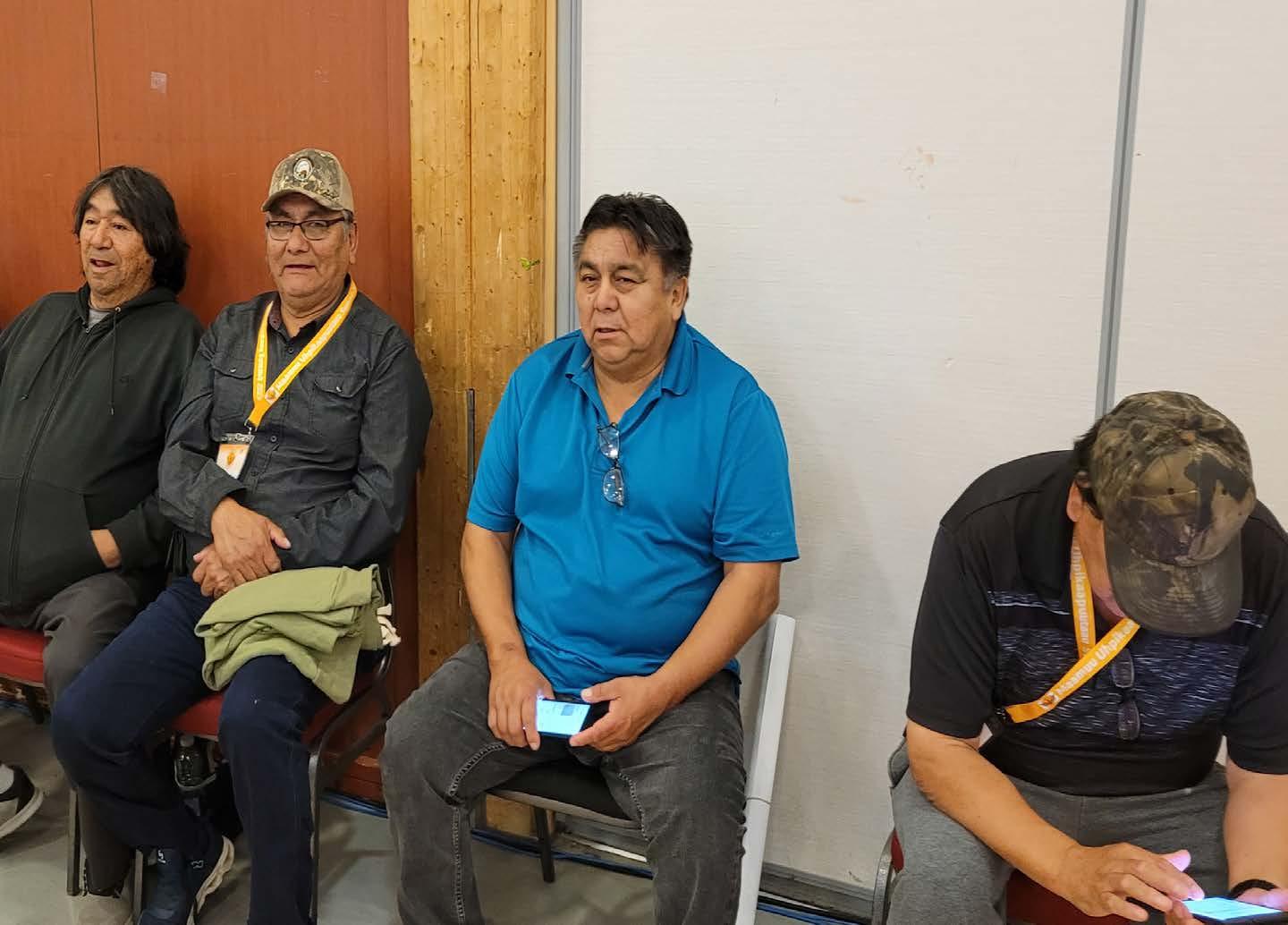


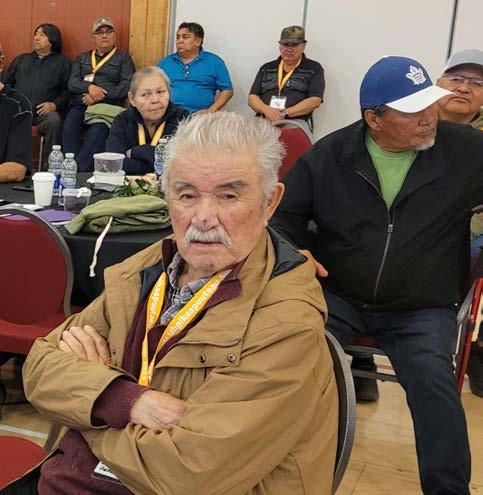

Ballpark action
The annual Jimikin memorial baseball tournament provided nail-biting entertainment by Joshua Janke | Photos provided by Mistissini Sports and Recreation
Mistissini’s Robert Jr. Jimikin Softball and Fastball Tournament was a homerun success this year.
The tournament is named after the late Robert Gillian Jimikin Jr, a young father of four who passed away in 2019. He was an important part of the Mistissini community and an active member in many Eeyou Istchee sports.
With 10 teams in the men’s fastpitch, six in softball, and four teams each in women’s fastball and softball, this event is the largest baseball tournament in Eeyou Istchee. For the fourth year of the tournament, 24 teams took to the field, vying for a combined total of $6,250 in prizes.

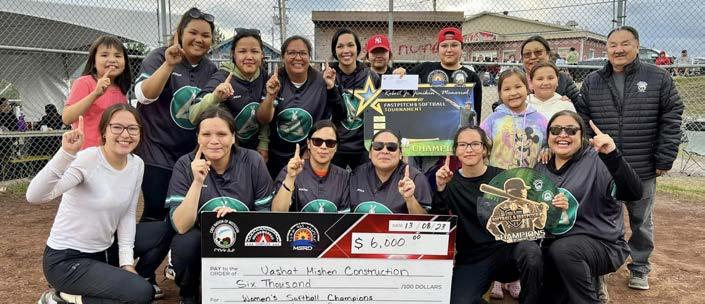
With teams coming from across Eeyou Istchee, providing adequate housing for the visitors was vital to the tournament’s success. The people of Mistissini stepped up so that all players and fans had a bed to sleep in the night.
Organized by Darlene Macleod and John Shecapio, the lodging committee worked very hard to make the event a success. The two were blown away by the support received from the community.
“If I had a home ownership, I’d take a whole team in,” one community member commented on the “Lodging Needed” Facebook post which was distributed weeks before the first pitch was thrown.
A total of 50 games were played in three days August 10-13, and there was no lack of drama. Games were played “no matter what, rain or shine”. With four games for each team to prove
themselves in, organizers emphasised the slogan “every game counts.”
The event lived up to the hype, giving spectators some of the closest games in tournament history. One interesting statistic about the tournament was that over 50% of all the games were decided by two runs or less. There was no shortage of amazing catches, home runs and double plays to keep the fans on the edge of their seats until the final inning. Even in the Championship segment, three out of four games were decided by a single run, making the margin between finalist and champion slim, and the respect for both teams large.
The list of teams competing in this year’s event were:

• Men’s Fastpitch: Mistissini Outlaws, Mistissini Scrappers, Waskaganish Hurricanes, Chisasibi Comets, Chisasibi Jays, Chisasibi Rockies, Eastman Fireballs, Eastman Athletics, Uashat Prospects, Ouje Bulldogs
• Women’s Fastpitch: Mistissini Lady Outlaws, Ouje Knights, Chisasibi Panthers, Barrier Lake
• Men’s Softball: MD, MFQ Uashat, Barrier Lake Bears, Chisasibi Lightning, Mistissini Rect’em Boys, Waswanipi Wolfpack
• Women’s Softball: Uashat Mishen Construction, Eastmain Wildcatz, Mistissini Free Agents, Mistissini
After the playoff dust had settled, the championship games for each division were set. The Chisasibi Panthers took on the undefeated Ouje Knights in Women’s Fastpitch. On the men’s side, the Waskaganish Hurricanes mustered an inspiring comeback in the late innings of their semi-final match, defeating the Chisasibi Comets 4-3 and moving on to face the Eastmain Fireballs for the Men’s Fastball championship. In Men’s Softball, the Barrier Lake Bears squared off against MFQ Uashat, while Uashat Mishen Construction faced the Eastmain Wildcatz in the Women’s Softball final.
Here are the results of the championship games:
Men’s Fastpitch: Eastmain Fireballs 7-6 Waskaganish Hurricanes
Awards: $20,000 cash prize: Eastmain Fireballs, Best Outfielder: Curtis Shanoush, Best Infielder: Conrad Blueboy, Best Catcher: Surrone Hester, Best Hitter: Brandon Wadden, Best Pitcher: Dakota Mayappo, MVP: Adam Cheezo, Gordon Memorial Award/Most
20 the Nation September 8, 2023 www.nationnews.ca
Sports
Women’s Softball and Men’s Fastpitch winners winners
Outstanding Player: Dakota Mayappo
Women’s Fastpitch: Chisasibi Panthers 12-11

Ouje Knights
Awards: $15,000 cash prize: Chisasibi Panthers, Best Outfielder: Delaunay
Cox, Best Infielder: Shalaine
Cookish, Best Catcher: Keona Simard, Best Hitter: Karlyna Louttit, Best Pitcher: Destiney Isik-Blacksmith, MVP: Harriet Neacappo
Men’s Softball: MFQ Uashat 8-4 Barrier Lake

Bears
Awards: $6,000 cash prize: MFQ Uashat, Best Outfielder: Enrico Fontaine, Best Infielder: Elijah Decoursay, Best Catcher: Malakail Gregoire, Best Pitcher: Keanon Papatie, Best Hitter and MVP: Renaud Jourdain along with his daughter who was also MVP of the tournament
Women’s Softball: Uashat Mishen Construction 14-11 Eastmain Wildcatz
Awards: $6,000 cash prize: Uashat Mishen Construction, Best Outfielder: Yanessa Desterres. Best Catcher: Mika Ambroise, Best Hitter: Keisha Snowboy, Best Pitcher: Tarraly Hester, Best
Infielder and MVP: Leeann Fontaine
The tourney is organized by the Jimikin family with help from the Mistissini Sports and Recreation Department, which assists with the organization and obtains sponsorships, and provides live scores, updates and action photos throughout the event, on its Facebook page.
On its Facebook page, the Sports and Recreation department gave a shout-out to everyone involved.
“On behalf of the working committee, we want to extend our sincerest gratitude to the family of late Robert Jr. Jimikin. They gave tremendous support by giving their helping hand at finding lodging, assisting the coordinating staff, maintaining the field but most of all spectating the games with other families, friends, and fans sharing fond memories of their beloved Robert Jr. Jimikin. This tournament would not have been the same or successful without the Jimikin family. We thank you for your support, your commitment, and the love of the game.”
www.nationnews.ca September 8, 2023 the Nation 21

You are not alone

Dealing with the pain caused by grief
by Allison Coon-Come
Ispent the last two weeks in debilitating pain that demanded me to feel it. Not just my physical pain, but the emotional pain I’ve been carrying as well. Although I’ve been scared to face it, I had no choice but to do just that.
The pain introduced itself to me as grief. Grief of all things, people and places that I have lost over the years. Sitting with these feelings can be uncomfortable especially when you try to deal with them on your own and on your own terms. Grief is such a misunderstood notion. I associated it with feeling bad. In reality, it is about how we cope with loss.
There is no wrong or right way of dealing with grief, but there are some gnarly side effects if you choose not to deal with it. I believe for me it manifested in my body. The emotional pain turned it into a physical one quickly after hearing about losing another loved one to cancer.
The day before I was set to travel to Mistissini my body decided it wouldn’t make the nine-hour trip, which broke my heart. During the debilitating pain it was easy to be hard on myself. Especially when I couldn’t make the funeral of yet another family member this year.
My mind was quick to judge and started being angry with my body. Which
I knew wasn’t the attitude I needed to get better. So, I had to practice a lot of self-compassion and patience with myself.
It wasn’t easy adopting a more positive mindset when you’re dealing with pain. I had to be so mindful of my mind and body at a time when I didn’t want to. I had to sit alone in grief.
I watched life from my window and phone while I was recovering. A calmness took over a little bit more each day. I was regaining my strength, mobility and independence. My spirit was also getting better and brighter.
I had some friends visit me. They were the perfect people to come through during my time of grief. We were sitting outside on my balcony, and I shared my appreciation for having them as guests in my home. They understood me, they saw me and encouraged me to write about it and share. They knew I was struggling to write something for The Nation
My friend was moved by how I articulated my pain

and grief. She said, “Allison, when you are ready, please write about this because so many people need to hear it. Use this for inspiration.”
Her encouragement gave me what I needed to write this. So many times, we feel we are alone in this pain that grief brings. We pretend it’s not there or we add it to a to-do list that never gets a second glance until something forces you too.
I heard a beautiful sentiment: grief is love with no place to go. If you google it, it will show you why it warmed my heart. I have so much grief that I never had to deal with it alone before. Living in your community allows you to be there for the goodbyes and to say goodbye beside your loved ones. I didn’t realize how much I was so used to grieving with my family, friends and community. It was the only way I knew how.
Living in the city can be tough for a lot of reasons but this is one I didn’t foresee. I didn’t realize how much those hugs, cries, laughter and stories help me grieve.
I didn’t know how to do that on my own. I just knew that both my physical and emotional pain needed me to be present.
When the calmness came, it came with my loved ones from the other side – to remind me I’m not alone in this. That comforted me and brought me closer to them. I have to remind myself to carry them with me everywhere I go.
American writer and activist Maya Angelou wrote, “You don’t go alone. Bring your people with you. Bring everybody who has loved you with you.”
Wasn’t she such a gift to this world. Angelou expressed words I wished to write. She’s my late auntie in my heart and these words I will remember always.
I am not alone in grief. I am surrounded by my loved ones always. This I know now. I don’t know if the things I write will be read or published but writing this helped my heart. This is written for those in grief. May we heal together and love each other.
Opinion www.nationnews.ca September 8, 2023 the Nation 23
NOTICE OF CERTIFICATION AND SETTLEMENT APPROVAL HEARING ( SHORT FORM )
Indian Boarding Homes Class Action
Were you placed in a private home by Canada for the purpose of attending school?
If yes, please read this notice carefully because it a ects your legal rights.
WHAT IS THE CLASS ACTION ABOUT?
The Indian Boarding Home Program was an educational program in which the Government of Canada placed children from First Nations communities and Inuit villages in other communities (usually non-Indigenous) to stay with private families for the purpose of attending school. The class action alleges that Canada’s actions in creating, operating, and maintaining the Indian Boarding Home Program were wrong. These actions created an environment where children were abused, harassed, and su ered other harms. The prolonged absence from family and community also caused loss of culture, language, and community bonding.
WHO IS INCLUDED IN THE PROPOSED SETTLEMENT?
The classes are de ned as follows:
a) Primary Class: Individuals who were placed in private homes, during the period of September 1, 1951 and June 30, 1992, for the purpose of attending school, not including placements for post-secondary education. Individuals placed after June 30, 1992, are also included if Canada was responsible for their placement.
b) Family Class: Members of the individual’s family who lost the guidance, care, or companionship they could expect from the individual.
To be eligible for compensation, Class Members must have been alive on July 24, 2016.
WHAT BENEFITS DOES THE PROPOSED SETTLEMENT PROVIDE?
The proposed settlement must be approved by the Federal Court before compensation will be available to class members. If approved, every Primary Class Member will be eligible for a Category 1 payment of $10,000: a single payment to anyone who was in the Indian Boarding Homes Program.
You may also apply for Category 2 compensation ranging from $10,000 to $200,000 based on the harms that you su ered, such as physical or sexual abuse. You may
hire your own lawyer to help prepare your application for Category 2 compensation. In that case, Canada will pay the lawyer an amount equal to 5% (plus tax) of the Category 2 payment you receive.
A foundation will be created to support commemoration, healing, and preserving languages and culture. Canada will pay $50 million to be administered by the Foundation. Family Class Members will not receive direct compensation. Their claims will be recognized and addressed by the indirect compensation available through the Foundation’s reconciliation projects. More information on compensation can be found in the settlement agreement which is available at www.boardinghomesclassaction.com / www. foyersfamiliauxfederaux.com.
WHAT ARE YOUR LEGAL RIGHTS AND OPTIONS?
1. Do nothing – If you agree with the proposed settlement, you do not have to take any action now.
2. Show your support – If you agree with the proposed settlement and would like the court to consider your support, you must write to either of the lawyers listed below. You must write no later than August 25, 2023
3. File an objection – If you disagree with the proposed settlement and would like the court to consider your objection, you must write to one of the law rms listed below. You must send your objection no later than August 25, 2023
4. Participate in the hearing – If you would like to talk to the court in person or by video, you must write to one of the law rms listed below. You must send your request no later than August 25, 2023
5. Watch the hearing – If you would like to watch the hearing, you can attend in Federal Court, 701 W Georgia St., Vancouver, BC, or use the attendee link (public) https://cas-satj.zoom.us/webinar/register/ WN__cOzZSGfQ2-bgs_p3JB_KQ. The hearing will be on September 12, 13, and 14, 2023, starting at 9:30 am PST (later in time zones further east).
WHAT IF I DO NOT WANT TO PARTICIPATE IN THE CLASS ACTION?
If the Settlement Agreement is approved, you will be able to exclude yourself (“opt-out”) if you do not want to receive compensation under the settlement and wish to keep your right to bring your own lawsuit regarding your participation in the Boarding Homes Program. To exclude yourself, you must submit an Opt Out form before expiry of the Opt Out period. To submit an opt out, please visit www.boardinghomesclassaction.com / www.foyersfamiliauxfederaux.com to obtain an Opt Out form and submit the completed form to one of the law rms listed below. The Opt Out period will be set by the Court and will be at least sixty (60) days from the date on which the Court issues an order regarding approval of the settlement.
WHO ARE THE LAWYERS FOR THE CLASS?
Klein Lawyers LLP
1385 W 8th Avenue #400
Vancouver, BC V6H 3V9
1-604-874-7171
ibhclassaction@callkleinlawyers.com
Dionne Schulze
507 Place d’Armes, Suite 502
Montreal, QC H2Y 2W8
1-514-842-0748
percival@dionneschulze.ca
HOW DO I GET MORE INFORMATION?
If you want more information about your rights and options, information about the settlement and details about the settlement approval process in the Indian Boarding Homes Class Action, and see the settlement agreement, please visit the following website at www.boardinghomesclassaction.com / www. foyersfamiliauxfederaux.com.
This notice has been authorized by the Federal Court of Canada
BoardingHomes_ClassAction_NationMagazine-082223.indd 1 2023-08-22 2:05 PM
Trying to make sense of it all Rez Notes
 by Sonny Orr
by Sonny Orr
Nearly every time I stepped outdoors over the past few days, there was a flock of geese flying by. I checked the calendar and discovered that it’s still August. Meanwhile, oodles of ripe berries drooping from the weight of their plumpness are begging to be picked and turned into some sort of jam.
Wait a minute, isn’t fall still a month away? What’s happening with the weather? Is it winter already? Of course, somebody from the far fringes of the North Pole posts pictures of snow-covered hamlets, causing a communal shiver in the populace. Yes, time is jogging on and has stopped marching at its usual historic pace and sped up, causing worldwide confusion.
As far as confusion is concerned, kids who often enjoy the long lazy days of summer were strangely anxious to get back to school. That’s not surprising. Most of the summer was spent not going anywhere nor doing the usual summer stuff. Instead, we were busy trying to breathe during a war against forest fire enemies that didn’t know when to quit.
Some conspiracy theorists have ideas about why the flames kept on going and going. A common theme is that it’s the work of evil modernists. Those who only see the world as a store of resources to be turned into useful things, such as tin xylophones or plastic tomato-core removers.
Myself, I need a jumping bangle smashing monkey with a small basket to collect change. Not for entertainment, but because my lazy cat still doesn’t understand a simple command like “sit”. In the end, it’s difficult to define the conspiracy: whether the fires were man-made or caused by a malevolent worldwide lightning storm.
Turning to the homework handed to me by one of my conspiratorial grandkids (where did they come from, anyway?), I loaned my expertise to some complicated mathematical questions. It turned out that my old-school multiplication skills have evolved into a four-way calculation method that involves a lot of arrows. I was totally confused until the five-year-old corrected me. Hey, didn’t math used to start in Grade 4?
Anyway, I double checked it all with my razor-sharp 60-year-old mind, happily discovering that I can still do complicated math in my head without a sharp pencil or even a 40-year-old calculator.
I now see where the last generation of mathematicians went wrong. The emphasis was on trying to get the right answer quickly without understanding why or how. Like trying to figure out if zero has any worth or if it is an actual number that can be counted.

Now, if only we could concentrate on real-world skills like fixing a vehicle or cleaning a ventilation system. Or repairing
dryers and washing machines. I did some research and discovered that, within a week or two, I could repair a dryer once the replaceable part arrived, costing me only $30.

Or how to bake that fresh blueberry pie without burning the crust or liquifying the pie filling so that it drips onto your skin with a temperature comparable to molten lava oozing from a volcano.
Yes, dear homemakers, cooking can be a deadly activity. If you make any false move, kablooie! There goes your deep fryer or high-pressure cooker flying through the wall in a ball of flames. Learning life skills really means staying alive and cooking something that can actually be eaten without a grimace and a choked-back swallow.
A puzzled teenager once asked me what kind of language I wrote in. Was it from Indiana Jones? Either the one in India or the one in South America I respond, you know there are more than a few languages in the world.

The one in the classroom, they chirped. I quickly retorted, that’s my handwriting. One bright kid piped up, “You mean cursive?”
Yes, yes, I affirmed, handwriting. Now, if I could only explain what I write about to my readers.
www.nationnews.ca September 8, 2023 the Nation 25
T T TTT
Many people lost their camps and large portions of their traplines, and I assume it’s going to create more traffic on other traplines this fall. Yes, we have the inherent right to harvest game on our land, a right that is recognized under the James Bay and Northern Quebec Agreement. But we still need to maintain sustainable harvests to keep animal populations healthy, while defining mechanisms of accountability for those who engage in harmful practices.
hese past months, I couldn’t stop thinking about the impacts the forest fires have had on wildlife. Many of the animals we harvest have offspring during the summer and we haven’t been able to measure the losses these species suffered this season. With Moose Break fast approaching, I wonder how we’re going to collectively manage harvests in the near future.It will be hard to quickly assess the damages to various wild populations or to create an efficient contingency plan. We will likely learn more as we return to the land to harvest and then adapt our practices from there.
However, our land and its wildlife have undergone drastic changes during the past decades because of resource extraction. And I wonder how resilient they will be after a hot summer plagued by huge forest fires.
The moose population was already starting to drop in certain areas. Last year, we had a delicate situation with Zone 17 where non-Natives were not allowed to harvest because the population was too low to accommodate everyone, and the Cree have priority.

This caused a lot of conflict between inland communities and non-Native
Tea &

 Bannock
Bannock
municipalities, and it fueled an already existing feeling of racist resentment towards our communities. Some individuals threatened to burn Cree camps and there were numerous threads of racist comments on social media. I fear more conflict will arise from the drastic changes that the land has experienced this summer.
The Cree have always been caribou people, but the damages done by resource exploitation in our region, espe-
cially around Waswanipi, has forced my community to stop hunting woodland caribou.
The loss of a tradition is a loss of knowledge, language and identity. Without caribou to hunt, we started to harvest moose. Sadly, the moose population is now decreasing. I hope we will quickly find ways to protect them so the next generations of Crees can feed their families.
MESSAGE TO ALL COMMUNITIES’ MEMBERS OF EEYOU ISTCHEE PLEASE CALL US BEFORE NOVEMBER 15 Meegwetch to inform us of any changes to your contact information for the upcoming James Bay Cree Phone Book 2024 Edition To update your contact info: 514-272-3077 projects@beesum.com
26 the Nation September 8, 2023 www.nationnews.ca
by Maïtée Labrecque-Saganash T&B
T
To learn and adapt
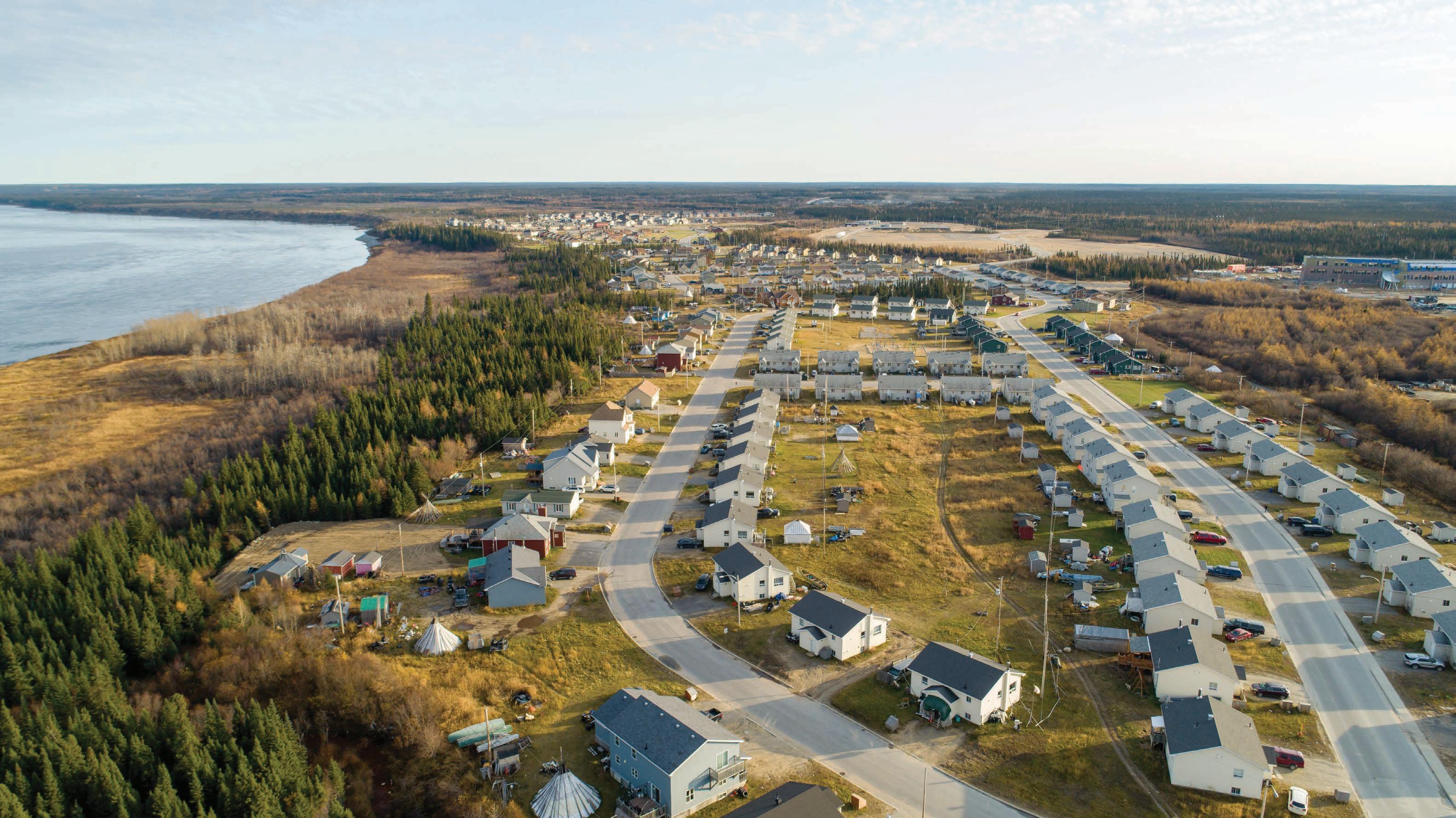

October 3-5, 2023 Château Cartier Hotel & Resort 1170 Chem. d'Aylmer, Gatineau, QC J9H 7L3 SAENCAT will host a Special Event the evening of October 4th. MORE INFORMATION COMING! WE WILL FEATURE: • Keynote speakers • Informative presentations • Industry exhibitors • Discussions on housing issues CAPITAL WORKS AND SERVICES - CREE NATION GOVERNMENT The Secretariat to the Cree Nation Abitibi-Témiscamingue Economic Alliance AN EVENT IN PARTNERSHIP WITH: Patricio Caceres Consultant Nottaway Consulting (819) 598-4908 p.caceres@nottaway.ca Bert Hester Coordinator of Housing Capital Works and ServicesCree Nation Government (819) 895-4171 bert.hester@cngov.ca Lawrence P. Katapatuk Regional Housing Planner Capital Works and ServicesCree Nation Government (819) 856-5234 housingplanner@cngov.ca FOR MORE INFORMATION CONTACT:


We offer discounted rates and seat sales. For information, reservations, or charters call: 1-800-567-6567or visit: www.aircreebec.ca Your Northern Airline of Choice











































 by Avanti Nambiar | Photos by Will Nicholls
by Avanti Nambiar | Photos by Will Nicholls




















 by Sonny Orr
by Sonny Orr





 Bannock
Bannock



